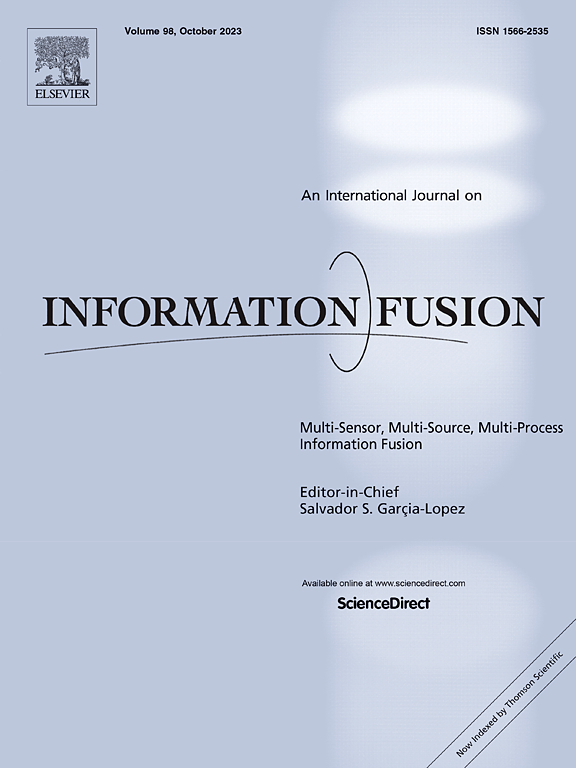Fusion-enhanced multi-label feature selection with sparse supplementation
IF 14.7
1区 计算机科学
Q1 COMPUTER SCIENCE, ARTIFICIAL INTELLIGENCE
引用次数: 0
Abstract
The exponential increase of multi-label data over various domains demands the development of effective feature selection methods. However, current sparse-learning-based feature selection methods that use LASSO-norm and -norm fail to handle two crucial issues for multi-label data. Firstly, LASSO-based methods remove features with zero-weight values during the feature selection process, some of which may have a certain degree of classification ability. Secondly, -norm-based methods may select redundant features that lead to inefficient classification results. To overcome these issues, we propose a novel sparse supplementation norm that combines inner product regularization and -norm as a novel fusion norm. This innovative fusion norm is designed to enhance the sparsity of feature selection models by leveraging the inherent row-sparse property in the -norm. Specifically, the inner product regularization norm can maintain features with potentially useful classification information, which may be discarded in traditional LASSO-based methods. At the same time, the inner product regularization norm can remove redundant features, which is introduced in traditional -norm-based methods. By incorporating this fusion norm into the Sparse-supplementation Regularized multi-label Feature Selection (SRFS) model, our method mitigates feature omission and feature redundancy, ensuring more effective and efficient feature selection for multi-label classification tasks. The experimental results on various benchmark datasets validate the efficiency and effectiveness of our proposed SRFS model.
基于稀疏补充的融合增强多标签特征选择
不同领域的多标签数据呈指数增长,要求开发有效的特征选择方法。然而,目前使用lasso -范数和l2,1-范数的基于稀疏学习的特征选择方法无法处理多标签数据的两个关键问题。首先,基于lasso的方法在特征选择过程中去除权值为零的特征,其中一些特征可能具有一定的分类能力。其次,基于l2,1-norm的方法可能会选择冗余的特征,导致分类结果效率低下。为了克服这些问题,我们提出了一种新的稀疏补充范数,它将内积正则化和l2,1范数结合起来作为一种新的融合范数。这种创新的融合范数旨在利用l2,1范数固有的行稀疏特性来增强特征选择模型的稀疏性。具体而言,内积正则化范数可以保留具有潜在有用分类信息的特征,而传统的基于lasso的方法可能会丢弃这些特征。同时,内积正则化范数可以去除传统基于l2,1范数方法中引入的冗余特征。通过将该融合范数融入到稀疏补充正则化多标签特征选择(SRFS)模型中,我们的方法减轻了特征遗漏和特征冗余,确保了多标签分类任务中更有效和高效的特征选择。在各种基准数据集上的实验结果验证了我们提出的SRFS模型的效率和有效性。
本文章由计算机程序翻译,如有差异,请以英文原文为准。
求助全文
约1分钟内获得全文
求助全文
来源期刊

Information Fusion
工程技术-计算机:理论方法
CiteScore
33.20
自引率
4.30%
发文量
161
审稿时长
7.9 months
期刊介绍:
Information Fusion serves as a central platform for showcasing advancements in multi-sensor, multi-source, multi-process information fusion, fostering collaboration among diverse disciplines driving its progress. It is the leading outlet for sharing research and development in this field, focusing on architectures, algorithms, and applications. Papers dealing with fundamental theoretical analyses as well as those demonstrating their application to real-world problems will be welcome.
 求助内容:
求助内容: 应助结果提醒方式:
应助结果提醒方式:


